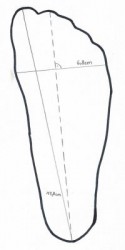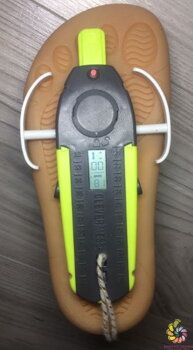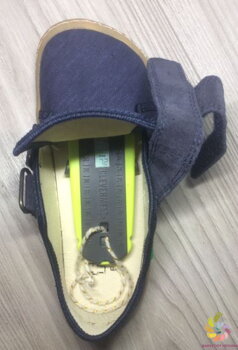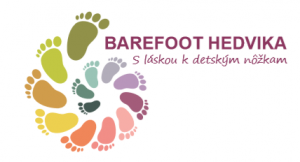Good to know
If you want to choose suitable shoe, first of all, get a correct feet measures
Measuring feet:
1) By drawing
It is important that the child stands with both feet on flat ground (paper) and evenly loads weight on both feet, fingers outstretched. The feet should be next to each other and it is ideal to measure both at least twice. Measure barefooted or in thin socks.
Always draw the line around both feet with a thin sharp pencil, which points perpendicular to the ground.
Length is from the center of the heel to the center of the dominant (longest) finger.
Width is measured as perpendicular line towards the axis of the foot approximately below the little finger.
Axis of the foot is guided from the center of the heel to the end of the second finger. If the second toe is dominant, then we measure the length of the foot in the axis of the foot.
2) By Gauge Plus12
https://www.barefoothedvika.sk/en/p/215/gauge-plus-12
This gauge measures only the length of the foot (the width cannot be measured). Subtract 12mm from the measured value and the result is the real length of the foot.
Dimensions of footwear shown in the e-shop.
For each shoe, we state the inner length and width of the shoe.
We measure the length with the Plus 12 gauge from the heel to the toe of the shoe in the place of the toe finger.
We measure the width with a Clevermess gauge without stretching the upper of the shoe. We measure in the axis of the shoe, so it is important to measure the width of the foot in this axis as well.


Foot type in the ratio of length and width
Simple calculation for approximate determination of the foot type (narrow, normal, wide ...).
Divide the length / width and compare the result with the table. Example: a foot with a length of 182mm and a width of 72mm has an index of 2,53. For a foot between 160 and 200 mm in length, the index 2.53 is in the range for medium foot type.

Source: Mrs. Lila Michalíková
Choosing right shoes...
The generally recommended toegap is about 1-1.2 cm in length, of which 5 mm for foot work (finger motion while walking) and rest for foot growth, so that the shoes last for some time. The choice of toegap is individual. A distinction must be made between prewalker and an experienced walker. For prewalkers, we recommend a smaller toegap (0.6 to 0.8 cm). It also depends on the type of footwear, e.g. we recommend a smaller toegap for sandals, and a larger one (up to 1.5 cm) for winter shoes. Adult usually need cca 0,6 cm toegap however it is personal preference.
Aim to choose shoegap to width of approx. 1-2 mm on each side. Most of the barefoot soles softens when worn (e.g. D.D.Step barefoot shoes).
When choosing a suitable shoe, you shall take into account:
- foot shape ("fin" shaped foot / straight foot)
- finger position (roof shaped / fingers straight next to each other)
- instep height (high / medium / low)
- heel and ankle size (narrow / medium / wide)
The shape of the shoe should respect the overall shape of the feet, the proportions between the toe and the heel or ankle. It is important that the shoes hold properly in the ankle area.
And of course, the most important thing is how a child walks in selected barefoot !
There is no universal method for choosing shoes. It is necessary to build on experience or seek professional advice.














































